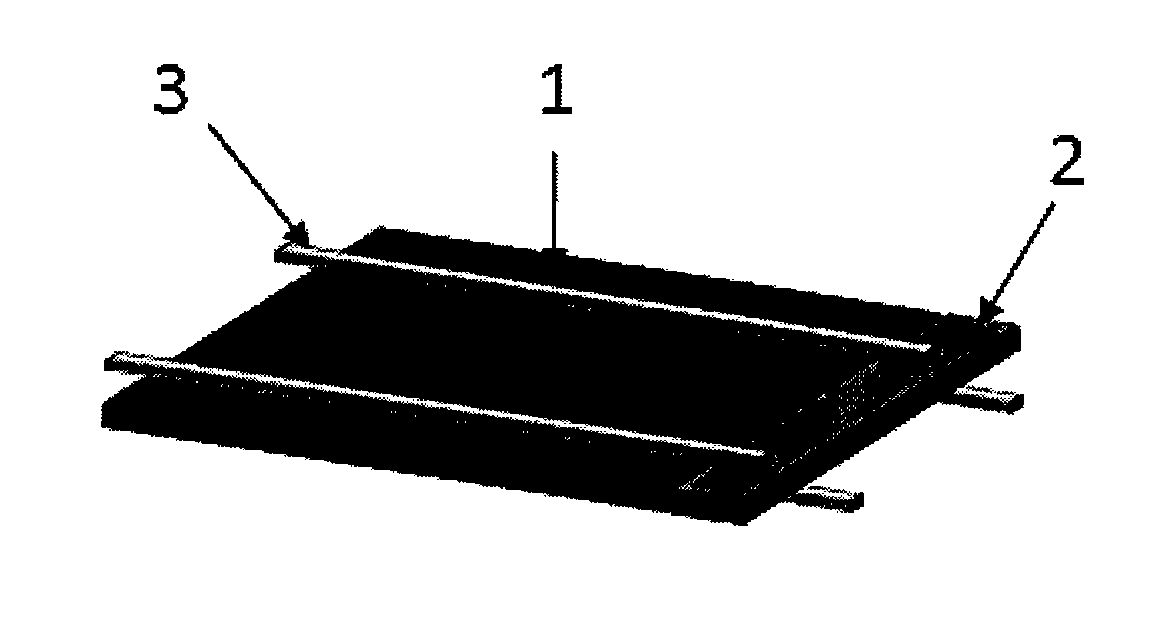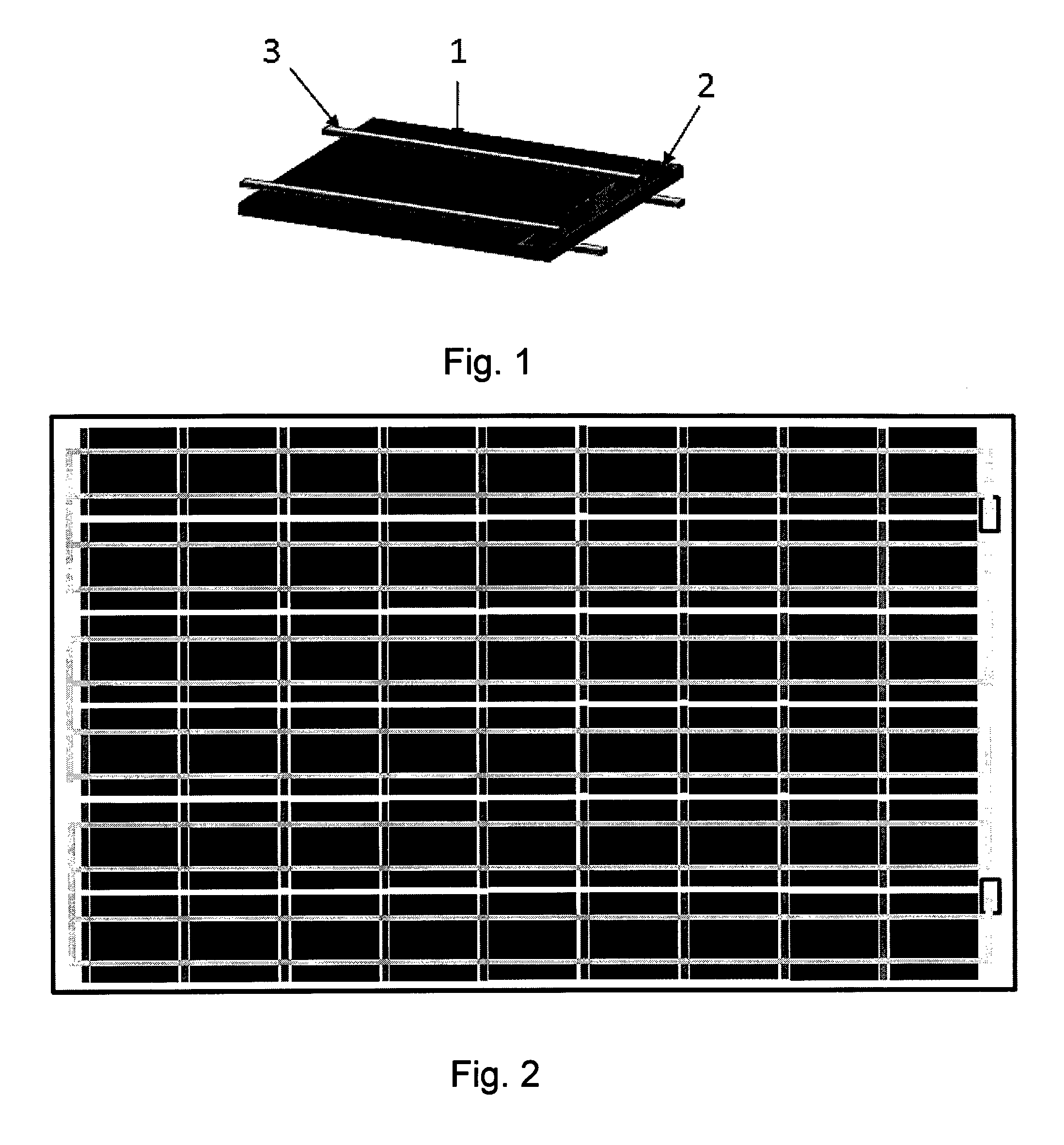Photovoltaic module with integrated solar cell diodes
- Summary
- Abstract
- Description
- Claims
- Application Information
AI Technical Summary
Benefits of technology
Problems solved by technology
Method used
Image
Examples
Embodiment Construction
[0043]FIG. 1 shows a single solar cell protected by a bypass diode 2. The diode is electrically connected in parallel to one or more production cells 1 by electrical connectors 3, and provides a path for the reverse currents generated when one or more of the production cells 1 are shaded as discussed in the introduction.
[0044]The wording connector(s) 3 or ribbon(s) are used interchangeably throughout the description to describe conductors interconnecting for example production cells and bypass diodes.
[0045]A solar module comprises a plurality of single solar cells. The maximum heating in a module occurs when one cell in a string 5 is shaded or partially shaded so that it 5 does not produce enough light generated current in forward bias to match the current generated by all the other unshaded cells in the same string 5 and hence goes into reverse bias as the current is forced through the shaded cell by the potential created by all the unshaded cells in the same string 5. Or the maxim...
PUM
 Login to View More
Login to View More Abstract
Description
Claims
Application Information
 Login to View More
Login to View More - R&D
- Intellectual Property
- Life Sciences
- Materials
- Tech Scout
- Unparalleled Data Quality
- Higher Quality Content
- 60% Fewer Hallucinations
Browse by: Latest US Patents, China's latest patents, Technical Efficacy Thesaurus, Application Domain, Technology Topic, Popular Technical Reports.
© 2025 PatSnap. All rights reserved.Legal|Privacy policy|Modern Slavery Act Transparency Statement|Sitemap|About US| Contact US: help@patsnap.com



